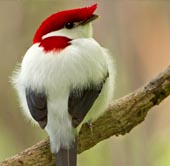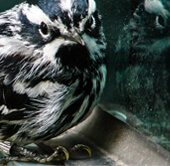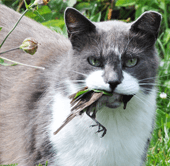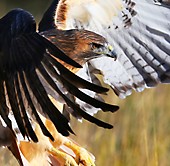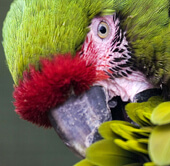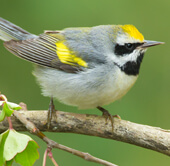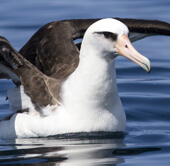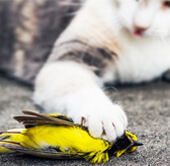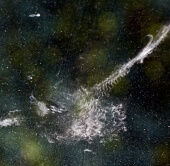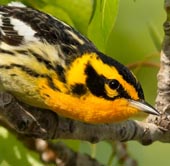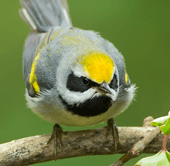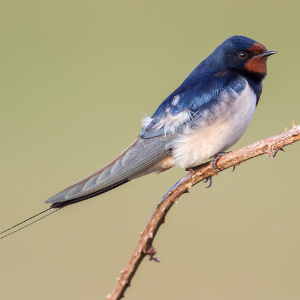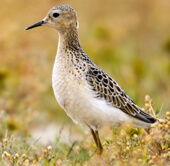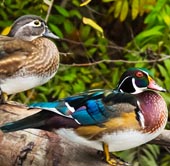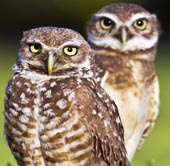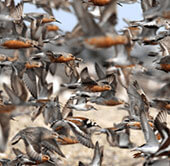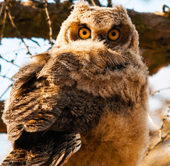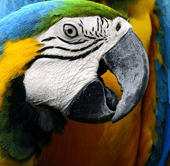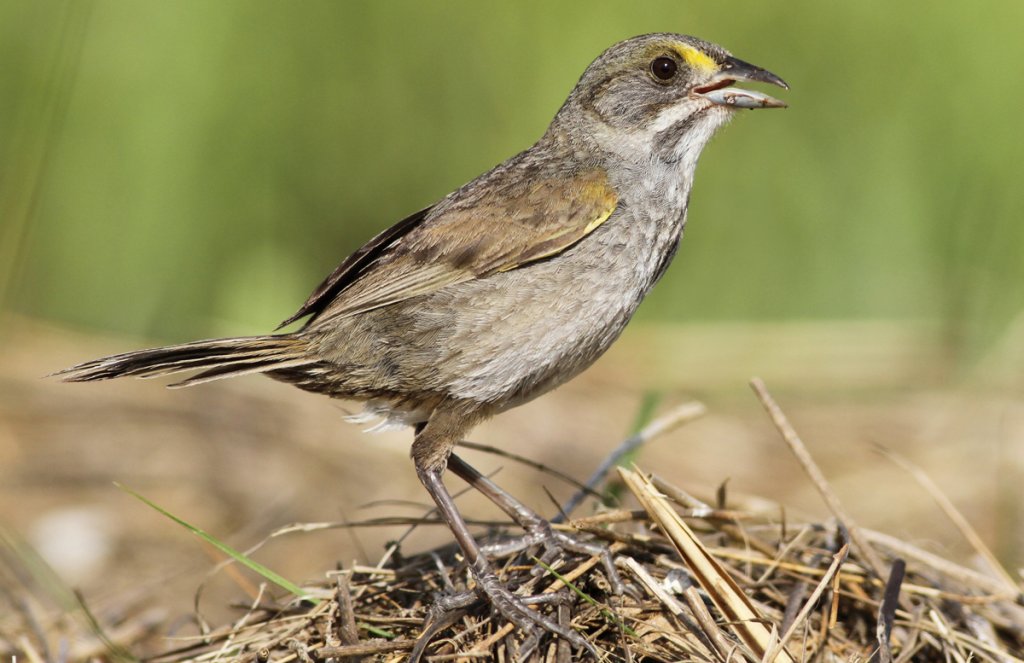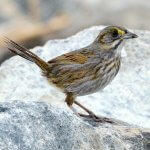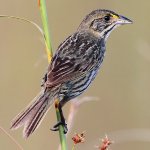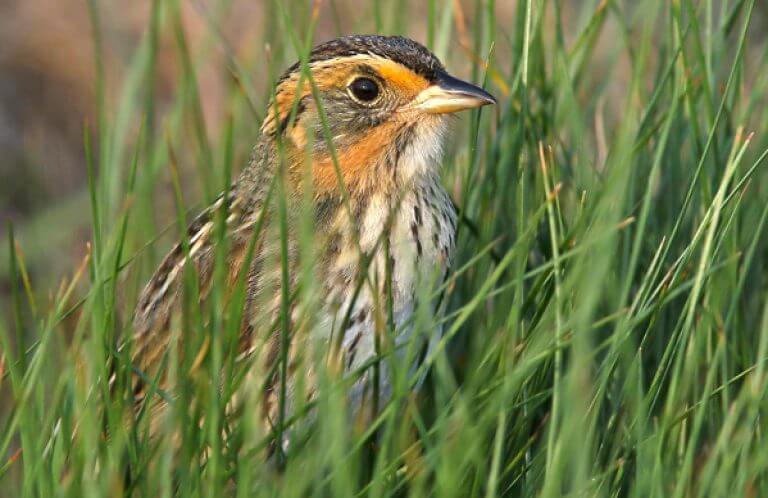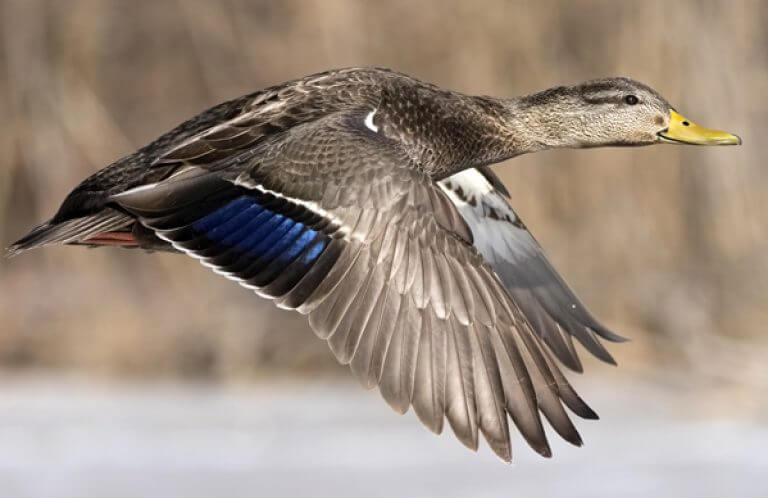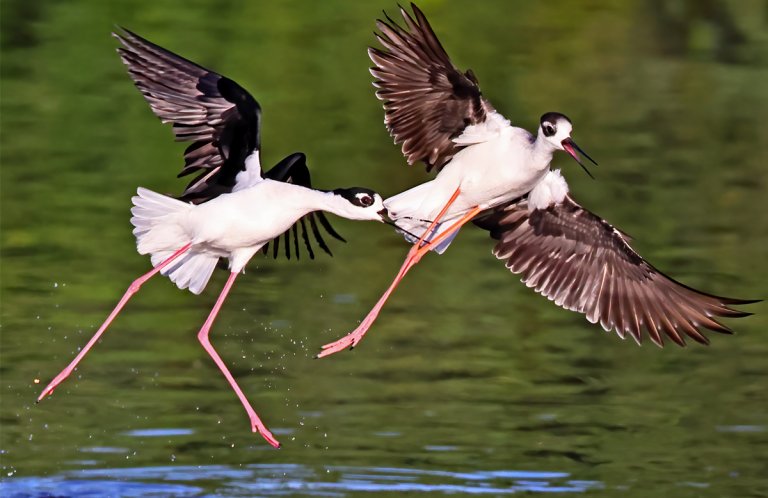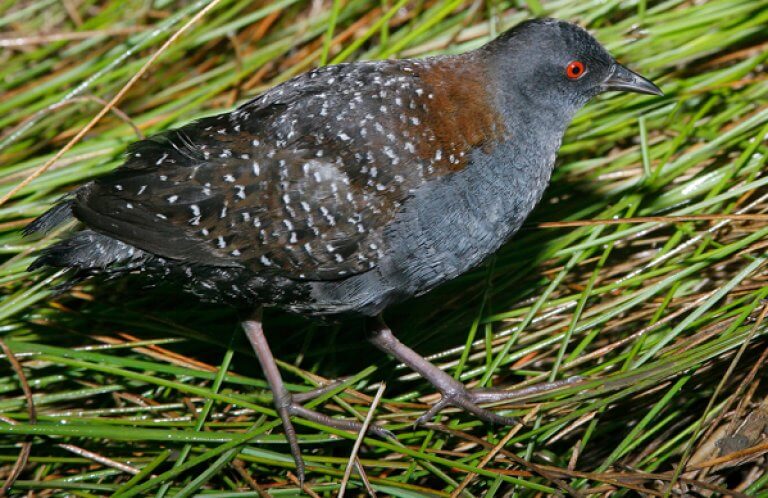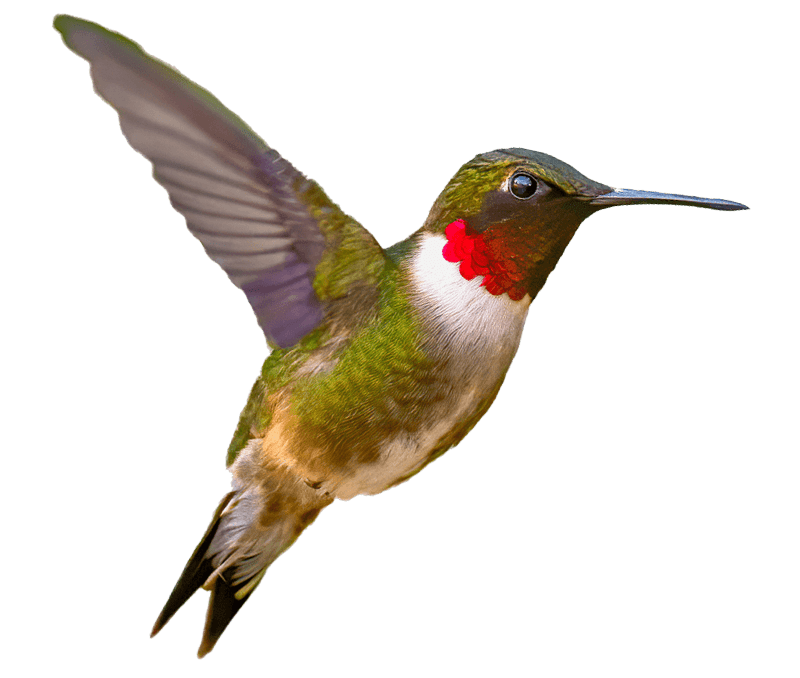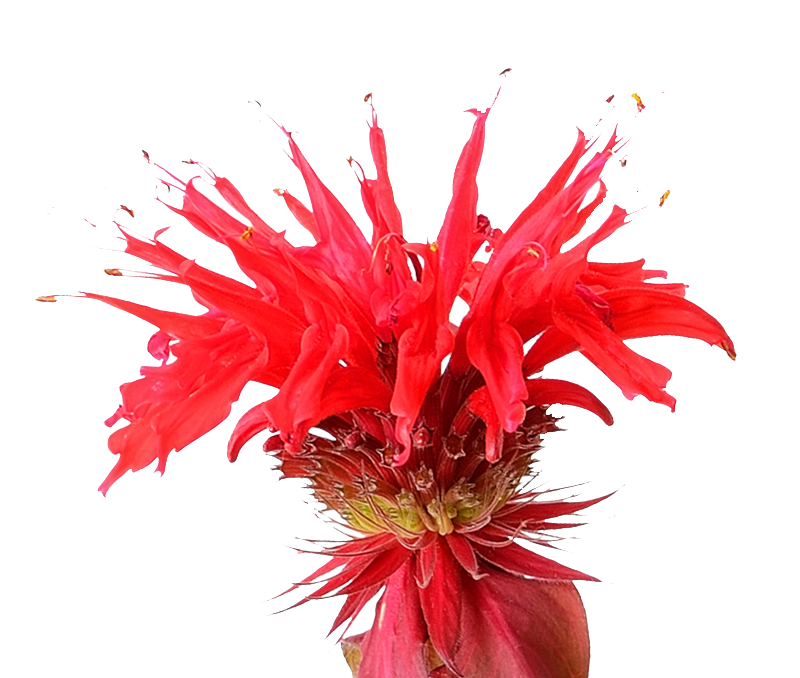About the Seaside Sparrow
The Seaside Sparrow is a large, long-billed, dark sparrow, well-named for its preferred habitats of salt and brackish marshes. Although it shares habitat with other shoreline-loving sparrows such as the Saltmarsh and Nelson's Sparrows, it is noticeably bigger and darker. Sometimes called the “Goldilocks Bird,” this sparrow needs a combination of environmental factors that are “just right” in order to breed successfully.
Ornithologists recognize seven subspecies of Seaside Sparrow, distributed along the U.S. Atlantic Coast south through the Gulf Coast of Texas. Adults of the Atlantic race are the darkest and dullest, overall plain gray and brown with indistinct blurry streaking down the bird's chest, belly and flanks. The Gulf Coast subspecies is slightly brighter, with buffy coloration and more obvious streaking. The Cape Sable race is even more distinctive, with an olive-green nape, striped back, and white breast marked with distinct dark streaking.
Notable field marks for all Seaside Sparrow subspecies are the yellow mark extending from the base of the upper bill to above the eye (called a supraloral spot), a white throat edged by darker “mustache” lines, and a long, almost spike-like bill. Some of these subspecies are endangered, and one is extinct.
A Dark Tale of Extinction
The dark-plumaged “Dusky” Seaside Sparrow subspecies was once resident along the Atlantic coast of southern Florida, in the marshes of Merritt Island and along the St. Johns River. Its small numbers and tiny range made it especially vulnerable to habitat loss, which in its case was caused by accelerated development, mismanaged mosquito control efforts, and road building. By 1979 its population had declined to only six males; although five were taken into captivity, the last Dusky Seaside Sparrow died there in 1987.
Songs and Sounds
The male Saltmarsh Sparrow usually sings from a conspicuous perch above the marsh grasses. Its buzzy song consists of a few rough introductory notes followed by a raspy sigh. The song varies slightly between the different subspecies.
Atlantic subspecies:
Gulf Coast subspecies:
Cape Sable subspecies:
Breeding and Feeding
The Seaside Sparrow has large feet that help it balance and run over muddy, marshy ground. It uses these big feet to “double-scratch” (leaping forward and then scratching backward) in dead grasses and ground cover, exposing hidden prey. This foraging method is often employed by relatives such as the White-throated Sparrow and Spotted Towhee.
These sparrows are monogamous during their nesting season. In nonmigratory populations, pairs may stay together year-round. Even in migratory populations, females sometimes repartner with their mate from the previous nesting season.
The male sings to claim a nesting territory that can vary greatly in size, from a quarter-acre to over two acres. He displays to visiting females by singing, calling, and raising his wings.
The female Seaside Sparrow selects a nest site within her mate's territory, usually in taller marsh grasses about 6–12 inches above ground to avoid flooding. The female builds a cup-shaped nest of grasses lined with finer grasses, often with a canopy or dome made by pulling nearby live plants over the top.
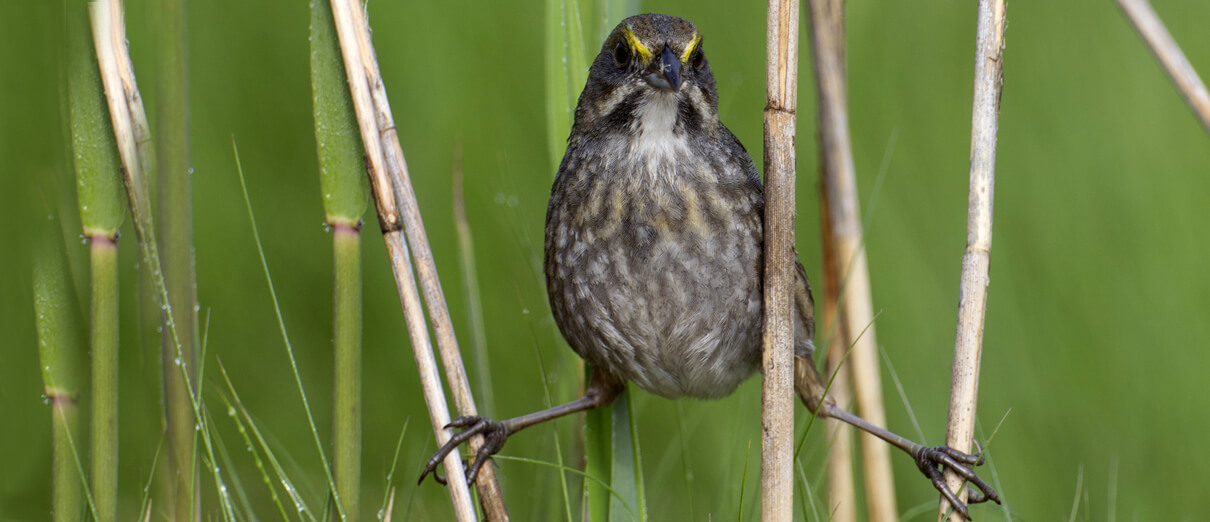
This species will re-nest if its nest is flooded or predated.
Female Seaside Sparrows lay a clutch of 2-5 white eggs that are speckled and splotched with brown. Only females incubate the eggs; both adults feed the nestlings, which grow quickly and leave the nest 9-11 days after hatching.
Once fledged, young Seaside Sparrows often gather in small flocks, sometimes joined by adults in the winter.
The Seaside Sparrow eats seeds, insects, spiders, and other invertebrates, gleaning animal prey from vegetation and the ground. It darts quickly through the marsh grasses in pursuit of prey, even wading into shallow water to probe beneath the surface. Its spike-like bill is particularly useful for probing into mud and picking through dead clumps of cordgrass.
Region and Range
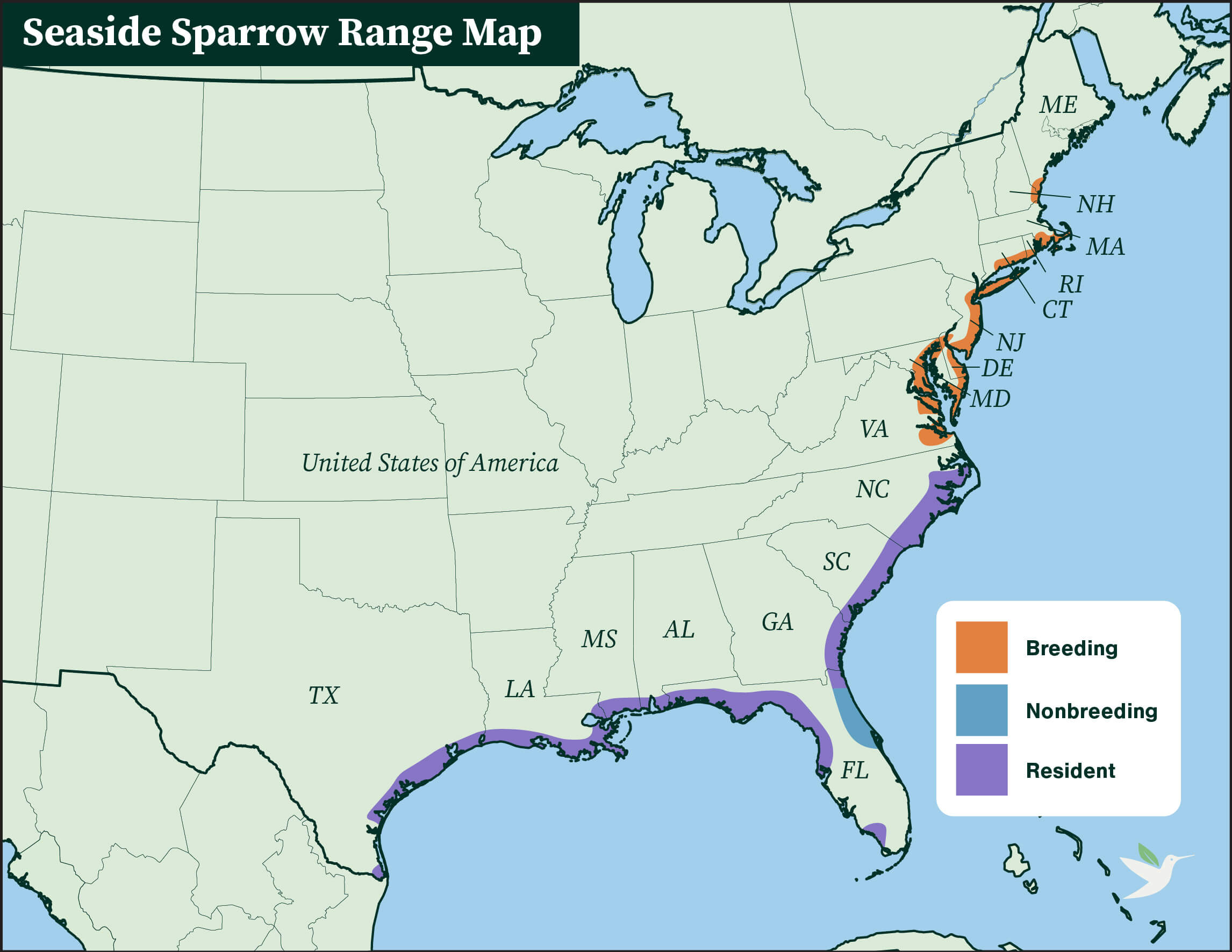
Seaside Sparrows nest along the Atlantic and Gulf coasts of the United States, from southern New Hampshire to southern Texas. Seven different subspecies are recognized; some migratory, some resident. Migrants of the northeastern subspecies (maritima) migrate to the Southeastern U.S. to winter.
Ideal conditions for successful breeding include nest sites above high spring tides and openings in vegetation where birds can forage. The best habitats contain adjacent nesting and feeding sites, otherwise birds must move between nesting territories and separate feeding areas.
The Cape Sable subspecies of Seaside Sparrow breeds in the freshwater grasslands of Florida's Everglades National Park and Big Cypress National Preserve. This habitat undergoes periodic burns, and includes plants such as cordgrass, muhly grass, and short sawgrass.
Conservation
Sea level rise and increased coastal flooding caused by climate change are swamping Seaside Sparrow nests and accelerating the loss of its tidal marsh habitats. Pesticides used to control mosquitos and pesticide runoff, along with coastal developments and rising sea levels, make habitat loss and pesticide use issues of concern for Seaside Sparrows as well.
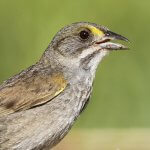
Help support ABC's conservation mission!
ABC works with the Atlantic Coast Joint Venture (ACJV) to coordinate marsh bird conservation along the U.S. East Coast, including in habitats for the Seaside Sparrow and birds of conservation concern such as the Black Rail.
With guidance and support from ABC and the ACJV, partners are scaling up habitat restoration and enhancement techniques in degraded coastal marsh habitats. Protection and restoration of large wetlands are critical to maintain healthy populations of this sparrow.
ABC also continues work to block or restrict the use of dangerous pesticides and toxic chemicals, which often pollute important aquatic ecosystems.
Get Involved
Policies enacted by the U.S. Congress and federal agencies, such as the U.S. Fish and Wildlife Service, have a huge impact on U.S. birds. You can help shape these rules for the better by telling lawmakers to prioritize birds, bird habitat, and bird-friendly measures. To get started, visit ABC's Action Center.
Living a bird-friendly life can have an immediate impact on the birds around you. Doing so can be as easy as adding native plants to your garden, avoiding pesticides, and keeping cats indoors. To learn more, visit our Bird-Friendly Life page.
American Bird Conservancy and our Migratory Bird Joint Venture partners have improved conservation management on more than 8.5 million acres of U.S. bird habitat — an area larger than the state of Maryland — over the last ten years. This is a monumental undertaking, requiring the support of many, and you can help by making a gift today.

